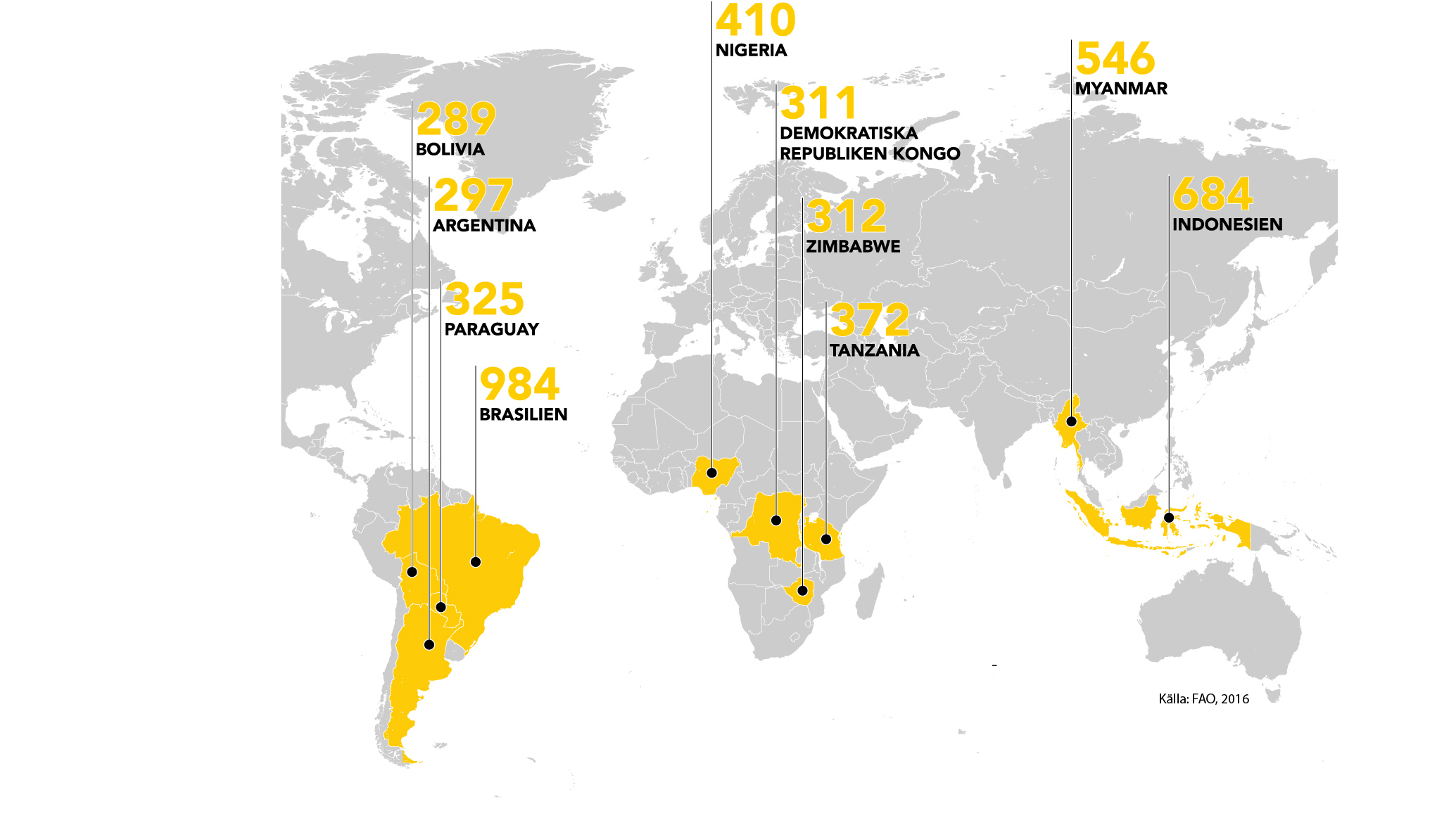The world’s rainforests are home to around 50 per cent of all land animals and plants. They are also important to mitigate climate change because they absorb carbon dioxide in the atmosphere and binds it (they function as so-called carbon sinks). Mining, illegal and unsustainable logging, the conversion of forest into agricultural land and large-scale animal husbandry are some of the causes of the destruction of tropical rainforest. Seventeen per cent of the Amazon rainforest has been destroyed in the past 50 years.
Area in hectares that has been felled annually 2010-15
Source: FAO, 2016
Some examples
- The Brazilian president Jair Bolsonaro wants to clear large tracts of the Amazon rainforest for soya production, start mining and increase meat production. This would have devastating consequences for local and indigenous populations who depend on the rainforest for their survival, the rich animal life and the earth’s climate. Since Bolsonaro became president, an area of forest larger than Gotland has been felled while at the same time protection for the forest has been weakened. Fires in the Amazon in August 2019 have made the situation acute.
- Peru’s rainforest is the fourth largest in the world and is one of the richest in terms of biological diversity. The forests are home to more than 3.5 million people, among them 60 different indigenous people. But illegal logging is widespread and represents a major threat to the forests. A report by Global Witness suggests that the country’s largest sawmill processes timber illegally and that forestry companies exploit corrupt authorities to falsify documentation about where timber originates from.
- Global Witness claims that European companies illegally import timber from Congo Kinshasa. In 2018, 10 companies were reported to have sold illegally sourced timber valued at around 2 million euro. Trees are felled and timber sold by the country’s second largest timber exporter. Illegal and unsustainable felling is one of the main threats facing the forests, which are the world’s second largest rainforest and that provide millions of people with food, water and their livelihood. The biological diversity of these forests is enormous with thousands of plant and animal species.

